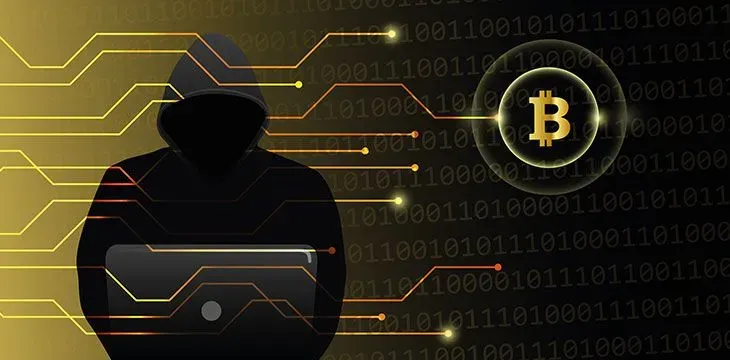Ways of thieves to steal cryptocurrencies - how to protect against them?
Cryptocurrencies have been popular for a relatively long time, and there have been various hacking attacks on cryptocurrency exchanges over the years. The criminals, sensing the possibility of quick earnings, decided to target them. Unfortunately, such incidents are not mentioned often, so we decided to take a closer look at this topic.
Cryptocurrency theft - cryptocurrency ATMs
There are Bitcoin ATMs in the world that allow for regular deposits and withdrawals to bank accounts and have a cryptocurrency trading function. The theft in this case is very simple. It is enough that a few seconds after receiving the cash (after withdrawing, i.e. selling BTC), you can cancel the transaction. Thus, the criminals stole $ 200,000. This is related to the characteristics of cryptocurrencies, and more specifically blockchain. Transactions are saved in the so-called blocks, while each new one is created every 10 minutes. All unconfirmed commands are deleted. This is a huge oversight on the part of the ATM owners and it was fortunately fixed. Currently, when withdrawing from ATMs, you must allow sufficient time to save the transaction to the blockchain.
Cryptocurrency thieves take advantage of malware
By default, hackers can try to get into bank accounts, but in their case, theft is difficult because banks quickly freeze accounts after reporting or detecting an intrusion. For this reason, virtual criminals target cryptocurrencies. Most often they use phishing messages, i.e. messages containing malicious payloads.
Usually, the goal of criminals is to find people who work for a given exchange. Later, they follow the habits of the enterprise, observe, check the architecture of the internal network and the place of storing wallets. This is a time-consuming task, but can lead a hacker to people who have access to critical systems. In 2019, there was such a hack on the Binance exchange. At that time, 7,000 BTC was stolen, which gives the amount of about $ 40,000,000.
How to protect cryptocurrencies from thieves? In this case, you should choose exchanges that have protection against targeted attacks that not only protect the nodes, but also detect anomalies. Professional exchanges apply such protection measures, thanks to which the cost of an attack exceeds the potential profit of the criminal.
Stealing cryptocurrencies by mastering 51% blockchain
In theory, the data in the blockchain cannot be changed, but in practice it may turn out otherwise. As a rule, block makers must accept who will be the creator of the next block. The evaluation is based on the length of the blocks and the rule that the longest version of the chain applies - when someone creates their own chain, others reject it because it is shorter. Sometimes, however, it turns out that blockchain development can be faked by using more than 50% of the mining power. This means that at a given time, in which the creators create 10 blocks, a counterfeiter can do eg 11. This version will be the longest, so everyone will accept it. What does the theft of cryptocurrencies look like here? Namely, after the release of e.g. Bitcoin in the old version of the chain, the thief can recover it on his account in a fake chain. Thus, the Gate.io exchange lost $ 200,000.
How to protect yourself against the theft of cryptocurrencies with 51% blockchain? In this case, exchanges extend the time of cryptocurrency exchange, thanks to which the attack becomes much more expensive and in many cases unprofitable. Why? When more blocks are created while a transaction enters the chain, the less likely the chain will be reorganized.
Bet on safe cryptocurrency trading
Are you afraid of cryptocurrency thieves, but want to invest in them? The safest solution is to trade with the use of digital currency exchange offices. They have professional security, and each user has an individual, unconnected account. In this case, you simply trade, not create more blocks in the blockchain.
Attention! The above article neither in whole nor in part constitutes a "recommendation" within the meaning of the provisions of the Act of July 29, 2005 on trading in financial instruments or the Regulation of the European Parliament and of the Council (EU) No. 596/2014 of April 16, 2014 on market abuse (market abuse regulation) and repealing Directive 2003/6 / EC of the European Parliament and of the Council and Commission Directives 2003/124 / EC, 2003/125 / EC and 2004/72 / EC and Commission Delegated Regulations (EU) 2017/565 of 25 April 2016 supplementing Directive 2014/65 / EU of the European Parliament and of the Council as regards organizational requirements and operating conditions for investment firms and defined terms for the purposes of this directive. The content contained on the website does not meet the requirements for recommendations within the meaning of the above-mentioned act, incl. do not contain a specific valuation of any financial instrument, do not rely on any valuation method, and do not identify investment risk.



